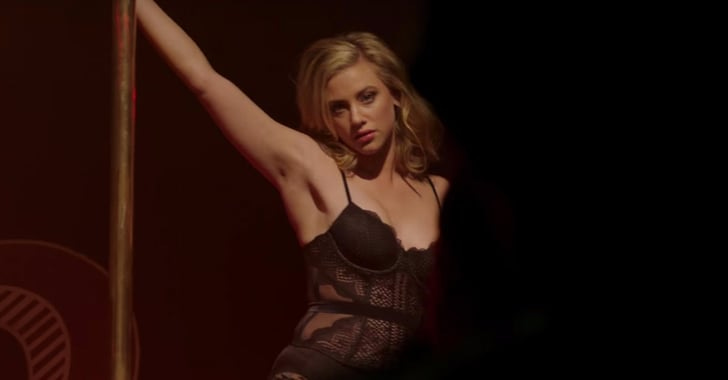
Like many public middle school girls of the twentieth-first century, I often felt an uptick in stress when picking out my outfit for school during the warmer months. I knew that upon entering my first-period class I would, without fail, have to glue my arms to my sides, allowing the teacher to surmise whether the hem of my shorts fell past my fingertips. I would have to hold three fingers against my tank top strap while my teacher analyzed whether too much of my shoulder was showing. All while being roughly eleven to thirteen years old.
Oftentimes, upon being “dress-coded,” we were sent to change into our gym clothes for the remainder of the school day, which was not only stinky and humiliating but also took time away from us actually learning in the classroom. All the while, our boy classmates could go about their learning in an uninterrupted manner without any unwanted attention being drawn to their pre-pubescent shoulders, thighs, or midriffs. Without being shamed for appearing “unpure.”
One day, we middle school girls felt particularly fed up with our bodies and wardrobes being scrutinized in front of our classes by the school faculty. So on one of the warmest days of the year, many of the girls collectively decided to wear the shortest shorts and smallest tank tops they owned to school as some kind of rebellion. The faculty quickly caught on to what we were doing and sent us out of our classes and over to the gym, where we were lectured to as we sat in our sweaty, oversized gym shirts (it was reminiscent of that Mean Girls (2004) scene where the junior girls are lectured following the “Burn Book” leak). Missing out on class material we would surely be tested on later so we could listen to how our shoulders, collarbones, and legs are too distracting to bear in front of boy students.
The irony in this, of course, is that the whole charade of reprimanding these girl students - the teachers calling them up to their desks at the front of the classroom to get a closer look at their bodies and clothing - was probably even more distracting than if the girls had just been left to do their school work in peace. The whole thing was made into a spectacle and was effectively reinforcing the idea that exposed parts of young girls’ bodies are to be analyzed.
In retrospect, with more years of being a woman under my belt, I can now more easily recognize both sides to this story. Many of the teachers may have been trying to shield the girl students from unwanted attention and behavior, or perhaps were trying to prepare them for the frivolous world of professionalism where cut-off denim shorts and spaghetti straps aren’t welcome. They may not have been trying to make them feel uncomfortable and maybe even had some respectable intentions behind their actions.
However, one of the main reasons I struggled with being dress coded wasn’t just the fact that it made me feel rather stripped of my autonomy, but was also the fact that I simply didn’t own any clothes that followed the school’s dress code requirements. Few girls I knew at my public middle school actually wore knee-length shorts and tank tops that covered their clavicles because that frankly wasn’t cool. And those weren’t the types of clothes being peddled our way at Forever 21 and H&M.
Many of my girl friends argued that the dress code targeted girls and left boys with the ability to dress however they wanted. While there may be some obvious truth in this, there’s also truth in the fact that most cisgender heterosexual boys weren’t showing up to school in mini skirts and tube tops because mainstream boys’ fashion is vastly more conservative than mainstream girls’ fashion. And it’s not some kind of coincidence.
In this 2018 piece for The New York Times, writer Sarah Clemence discusses the different experiences shopping for clothes for her five-year-old son and her three-year-old daughter. While the “little boys’” section is commonly filled with functional, pocket-laden pants with reinforced knees for running and climbing and substantial shirts that can withstand grass stains, the “little girls’” section contains “lightweight leggings, scoop-neck tops, and embellished shoes.” Of the cuts of the garments themselves, she pointedly writes:
“The differences in cuts - boxier for boys, narrower and more revealing for girls - have nothing to do with differences in children’s frames.”
These disparities have everything to do with the fact that it’s more common for girls’ clothing to be less functional and more ornamental, hugging their bodies much snugger than boys’ clothes, even as early as toddlerhood.
In this 2012 study led by Dr. Sarah Murnen of Kenyon College, a research team found that about 30% of clothing sold to young girls at pre-teen stores had a degree of sexualization, whether it’s a low-cut top or some kind of decorative embellishment or text written across the butt of pants. This is a trend that I’ve noticed extending into adulthood - it’s less common for straight men to wear casual clothes that draw extreme attention to their body shape, largely because this type of clothing is not marketed towards them and rarely produced at all.
Regardless of the assumptions people make, I should make it clear that what someone’s wearing is no indicator of their intellect or “purity.” Yet, assumptions persist. In that same study by Dr. Murnen, participants’ rankings of a girl’s capability, competence, determination, and intelligence dropped when she wore obviously sexualizing clothing. She was also ranked as having lower self-respect and morality than when she was more modestly dressed.
Within patriarchal cultures, girls and women are often overly sexualized and objectified, often without their consent. Thus, this gap in modesty between boys’ and girls’ clothing, while alarming and disturbing to look at up close, is unfortunately not surprising. This trend is, of course, accompanied by popular media that portrays grown adults playing teenage girls, often engaging in graphic sexual situations in little to no clothing at all (*cough* Euphoria *cough*). Even more troubling, this type of media - in tandem with beauty advertisements, mainstream pornography, and every other kind of hyper-appearance-oriented media - bolsters an ever-evolving beauty standard that demands women to more or less look like pre-pubescent versions of adults. Small bodies, hairless, smooth skin, the list goes on.

We’re expecting modesty out of girls while everywhere else they’re being fed fetishized, idealized versions of themselves that they’re meant to think are aspirational in some sense. And then we blame them for eating what’s put on their plate. We shame them for wearing the clothes that are designed and marketed for them. We castigate them for trying to be perceived in ways that we’re intentionally and subliminally teaching them to want to be perceived by the media and clothing we produce. Until they gain a hyper-awareness of sorts, constantly cognizant of their bodies, what’s adorning them, and how they’re positioned and perceived.
As a grown working woman, the modesty gap in clothing doesn’t disappear. You’re invited to after-work happy hours and not sure what to wear - a blazer or work blouse feels too stuffy, but your usual going-out clothes feel too immodest. You’re searching for Halloween costumes for your company party and can’t Google “women’s Halloween costume'' without seeing ensembles that would have gotten you sent to the gym shirt of shame. Constantly teetering the line of looking too pure that you’re pedantic and too impure that you’re unserious. If only a polo and khakis could be the universal default.
Whether at Easter Sunday with my grandparents or on a fuzzy weekend out with friends, I’m often still mentally - if not literally - gluing my hands to my sides and seeing where my hem falls.

I’m not (entirely) trying to rain on everyone’s parade and ruin their favorite shows. Some of this content (mainly Mean Girls (2004)) may even be an attempt at satire. What I am saying is that the world needs to take the blame and shame off of teenage girls and start putting that pressure on the teenage-sexualization-industrial complex that’s pumping out TV shows that eroticize minor girl characters on the pretext of “edginess” and producing non-practical fast fashion that’s already unraveling upon purchase. Only then can we maybe start to see a culture emerge that doesn’t blame girls and women for rocks being thrown directly at their windows.







YES to all of this!! You hit the nail right on the head. I’ve been saying for years that the real culprit behind girls dressing more “immodestly” is because those are the only clothes sold to them and the only image marketed towards them. it really shows how huge societal forces like capitalism can influence things as personal as clothing choices, gender presentation, and even gender identity and sexuality. if girls weren’t constantly told to dress and act like this i think our whole conception of girlhood and womanhood would be completely different.
Oh so true , and what about girls whose legs are so long that they would never meet the requirements ?